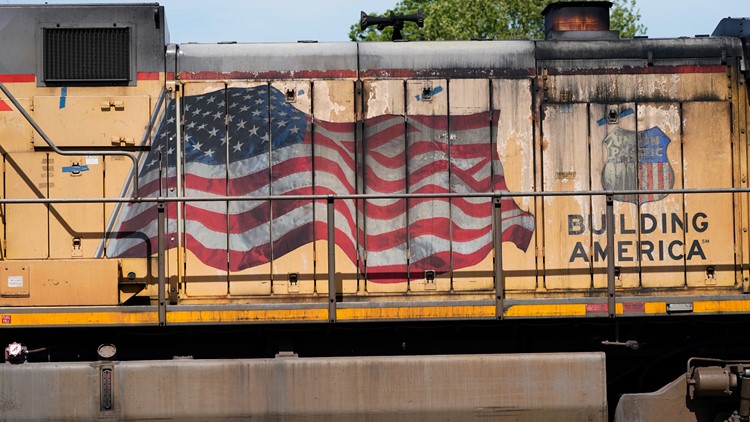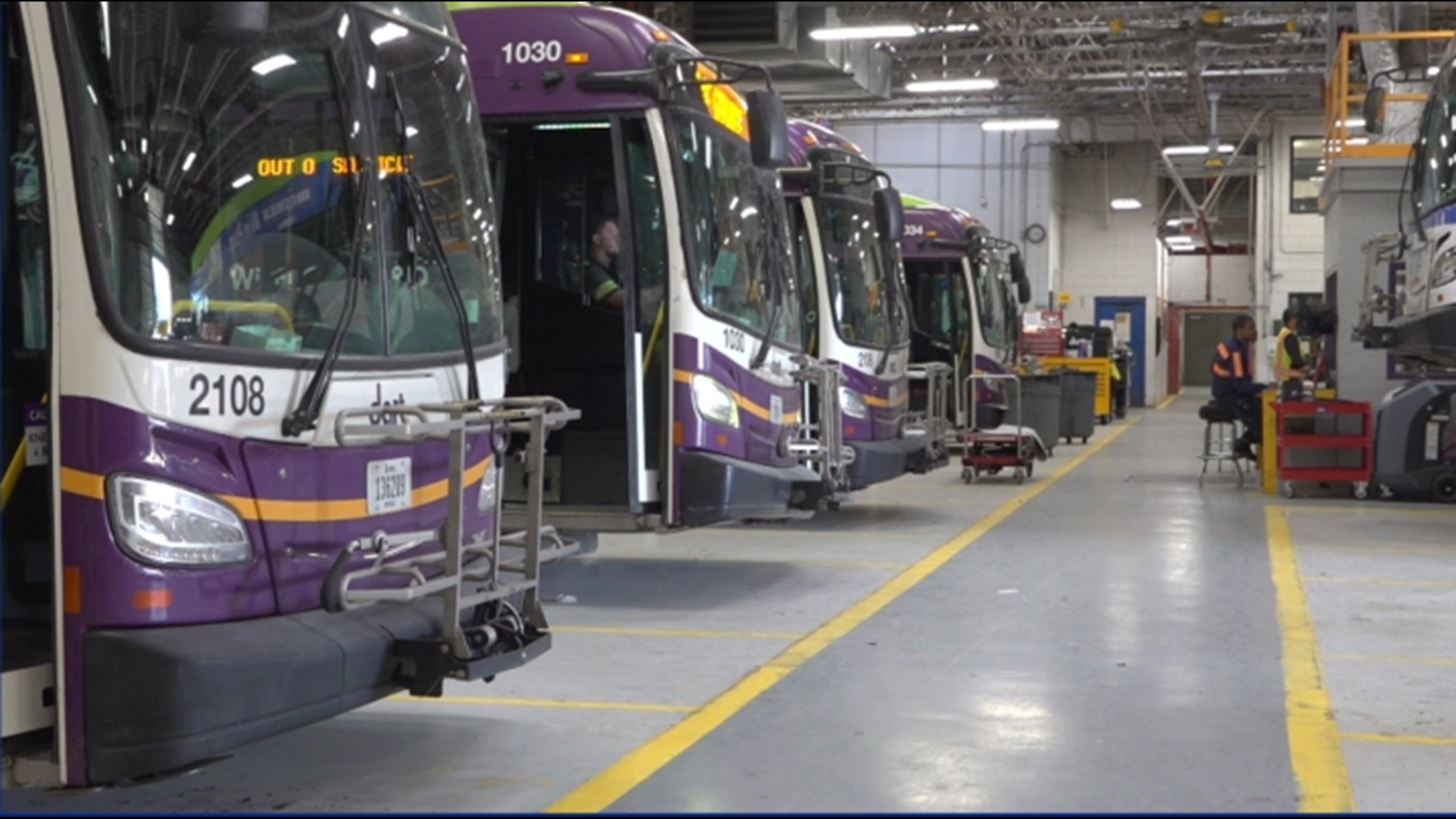OMAHA, Neb. — Union Pacific will spend more than $1 billion to upgrade 600 of its old diesel locomotives over the next three years and make them more efficient, but regulators still want it to do more to cut pollution from its engines.
The move will accelerate the pace of upgrades UP already planned to make and help the Omaha, Nebraska-based railroad cut roughly 210,000 tons of carbon emissions each year -- the equivalent of taking 45,000 cars off the road. The railroad will go from modernizing 120 locomotives this year to modernizing 200 a year in each of the next three years.
“It’s really taking the older locomotive fleet and applying the latest and greatest to get one of the most fuel efficient locomotives we can have,” said Grace Olsen, who oversees locomotive engineering for Union Pacific.
The railroad estimates that this program will improve the fuel efficiency of these long-haul locomotives by up to 18% and help them produce peak power more reliably. To accomplish that, locomotive manufacturer Wabtec will strip down the locomotives, and spend eight weeks overhauling their engines and installing new software and electronic controls.
The improved power will let Union Pacific pull the same amount of freight with fewer locomotives. That, combined with the railroad's efforts to significantly boost the length of its trains, will allow Union Pacific to keep more of its fleet of 7,400 locomotives in storage. UP has already parked hundreds of locomotives as part of the operational changes it has made over the past several years.
Wabtec says this UP project is the biggest single investment in modernizing locomotives in railroad history although other major freight railroads are making similar improvements to their fleets. Earlier this year, Norfolk Southern announced plants to modernize 330 of its 3,200 locomotives over the next three years to give it more than 950 modernized locomotives by the end of 2025. UP will have 1,033 upgraded locomotives after its project.
“It comes down to really taking an asset that’s there and really infusing it with technology so that for the next 20 years of its life, it’s optimized,” said Gina Trombley, Wabtec’s Chief Commercial Officer.
UP says these locomotive upgrades are an important part of its plan to reduce its greenhouse gas emissions by 26% by 2030, compared with 2018 levels, along with increasing the amount of biodiesel and other renewable fuels it uses to 20% of its fuel consumption. The railroad has also announced plans to buy 20 battery-powered locomotives to test out in its railyards beginning next year, but UP officials say that technology won't be ready for widespread use for at least several more years.
UP and the other major freight railroads like to tout the fact that they are more efficient than trucks because each train can haul the amount of freight that it would take hundreds of trucks to deliver. The EPA estimates that railroads account for about 2% of the greenhouse gas emissions from transportation while hauling 40% of the raw materials, finished products and imported goods that businesses rely on. Locomotives account for nearly all of railroads' emissions.
Regulators with the California Air Resources Board who have led the nation with their efforts to regulate locomotive pollution and lobbied the federal Environmental Protection Agency to tighten its locomotive standards said the reduction in carbon emissions is welcome, but they would like to see Union Pacific focus more on reducing its particulate matter and nitrous oxide emissions, which are associated with increased cancer risks and other health problems — particularly around railyards.
Diesel exhaust contains tiny particles that can penetrate deep into the lungs, carrying a variety of toxins that have been linked to cancer, lung disease, heart attacks and other ailments.
“What we’re talking about today is more GHG (greenhouse gas) focused, which we look at as important, but it’s a secondary impact when we’re talking about reducing freight emissions at ports and railyards and their associated health impacts for communities,” said Cari Anderson, who oversees locomotive regulations at the California agency.
Regulators would rather see Union Pacific invest in new locomotives that can meet today's more stringent environmental regulations instead of overhauling locomotives that were purchased roughly 30 years ago and continuing to use them for years more.
Anderson said California wants freight railroads to upgrade their entire fleets to locomotives that can meet the EPA's tough Tier 4 standard because that is associated with a 90% reduction in cancer risk or use locomotives with no emissions like the battery-powered ones that UP is testing. Currently, only about 5% of Union Pacific's locomotives used in the state meet the Tier 4 standard.
Union Pacific said the best these locomotives purchased in the 1990s can do is meet the EPA's lower Tier 2 standard. The railroad said the improvements being made to these locomotives should help reduce some of the particulate matter and nitrous oxide emissions, but it didn't have an estimate of how much those will improve.
Union Pacific is one of the nation’s largest railroads with a network of 32,400 miles (52,000 kilometers) of track in 23 Western states.



